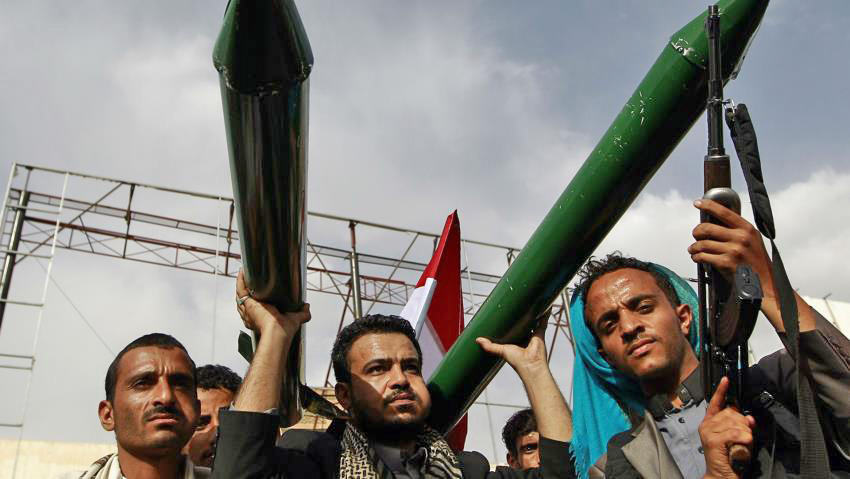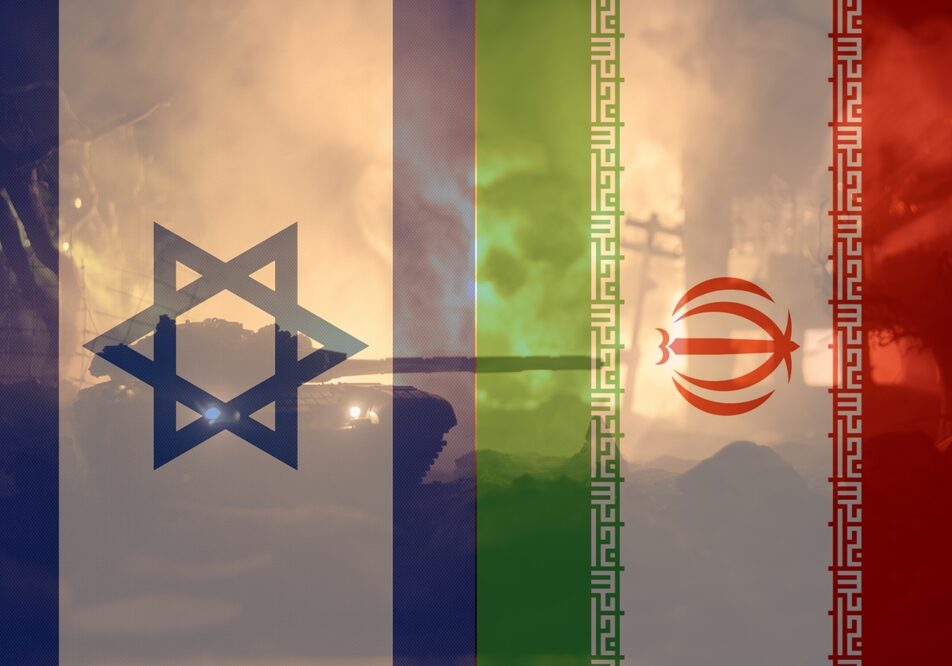Australia/Israel Review
Essay: The Missiles of November
Dec 21, 2017 | Uzi Rubin

Yemen, Hezbollah and Iran
Uzi Rubin
In a CNN interview on November 6, Saudi Arabia’s Foreign Minister Adel Jubair asserted that “Lebanon has declared war” on his country. This accusation was made following the launch of a ballistic missile from Yemen towards Riyadh International Airport (it was shot down harmlessly by Saudi Arabia’s Patriot defence system). “This was an Iranian missile… launched by Hezbollah,” Jubair said. “We regard the Lebanese Government as a government that has declared war on us.”
To most Israelis, this sounds like fake news. What is Hezbollah – a Lebanese Shi’ite militia dedicated to fighting Israel – doing in Yemen? And what has it got to do with ballistic missile attacks on Saudi Arabia?
Yet this is not fake news. Hezbollah does indeed have a presence in Yemen. For the past two years, it has been supporting the Houthi insurgents in their war against the Saudi-led coalition. In the course of that war, ballistic missiles have regularly been launched against Saudi Arabia’s major cities.
As far as we know, the November missile attack on Riyadh was not the first but rather the fourth such attack this year. Moreover, ballistic missiles are being fired from Yemeni territory not only at Riyadh but also at border towns and major cities across the Saudi Kingdom. This missile campaign is part of a strategic move by Iran to establish its hegemony in the Middle East. It is skilfully exploiting the existence of Shi’ite-affiliated minorities throughout the region.
Since the 2011 outbreak of what some still call with macabre humour the “Arab Spring”, a bloody civil war has raged in Yemen, a war that has cost the lives of 10,000 civilians to date. This civil war – perhaps the least reported of all the upheavals to have engulfed the Arab world in the past six years – is not the first of its kind. Yemen is notoriously prone to civil wars. The one that raged between 1962 and 1970 saw the first use of chemical warfare in the Middle East, when Nasser’s Egyptian army used it during its intervention on the side of the rebels against the regime of Imam Yahiya.
The presence of a large Egyptian army contingent in Yemen created a sense of relief in Israel and led to expectations in early 1967 that there would be no war in the next year or so. Those expectations were rudely shattered when Nasser closed the Straits of Tiran to Israeli shipping and marched his army into the Sinai. The rest, as they say, is history.
A shorter civil war raged in 1994 between South Yemen (previously the British colony of Aden) and North Yemen (historical Yemen). This too is one of the most forgotten conflicts in history. It nevertheless saw high-intensity fighting, including ballistic missile exchanges between the sides.
The North launched short-range, Soviet-supplied SS21 missiles against the city of Aden, and the South launched Soviet-supplied Scud Bs against Sana’a, the national capital. The South claimed that its air defence artillery managed to shoot down Northern missiles, and the North reported dozens of deaths and significant damage in Sana’a from Southern missiles. This war, like its predecessors, warranted scarcely a mention in Western media and military publications.
The current fighting in Yemen started with non-violent protests against then President Ali Salah that quickly escalated into armed clashes between tribes and factions across the country. In 2015, these clashes grew to full-scale civil war between the Houthi-led coalition (Houthis are a Shi’ite religious-political movement) and the forces loyal to the current president Abdrabbuh Mansour Hadi and supported by Saudi Arabia.
The Houthi coalition, which was already in control of Yemen’s highland regions, quickly overran Sana’a and Aden (previously the capital of the extinct People’s Democratic Republic of Yemen, aka South Yemen). In response, Saudi Arabia assembled a coalition of Sunni Arab states from the Gulf and from Africa (Sudan) that invaded Yemen with the aim of defeating the Houthis.
Following initial Sunni successes, mainly the liberation of Aden and its environs, the front line became static. Yemen is now divided between the southern region, controlled by the Saudi-led coalition, and the northern region, ruled by the Houthis. The two regions roughly coincide with the former territories of North and South Yemen.
While Iran has not officially joined the war, its extensive support of the Houthi side includes supply of weapons, dispatch of military advisers and auxiliary troops, and generous financial support. Its involvement has transformed the Yemeni civil war into a major arena in the struggle between Iran and Saudi Arabia over the future of the Middle East.
When the North won the 1994 civil war, the government of the then reunified Yemen replenished its ballistic missile stockpiles, mainly by acquiring Scud C missiles from North Korea. When the Houthis overran the missile depots near Sana’a, they were bombed by the Saudi air force, which claimed it had managed to destroy all of them.
This claim turned out to be premature when the Houthis displayed Scuds and SS21s painted in their own colours, presumably the same missiles “destroyed” by the Saudi bombing. The Houthis also displayed rockets and short-range missiles that closely resembled those of Iran.
In April 2015, the Houthis commenced a missile campaign against Saudi-led coalition bases in Yemen and against Saudi towns across the border. In one well-documented incident, a Houthi ballistic missile – probably an SS21 – killed 45 United Arab Emirate troops when it hit an ammunition dump inside a Saudi coalition forward base near Sana’a. Other missiles hit the town of Khamis Mushait, which abuts the giant King Khaled Saudi Air Force Base (SAFB), and the towns of Najran and Jazan (a port city and a Saudi naval base, respectively). There are no clear reports on casualties or damage from these attacks.
In September 2016, the Houthi regime in Sana’a unveiled a new 800km ballistic missile dubbed the Burkan. Shortly thereafter, missiles of that type were launched at Ta’if, Saudi Arabia’s summer capital city, and at Jeddah, the Kingdom’s largest port, which is 680 km from the Yemeni border.
In Feb. 2017, the Houthis unveiled an even longer-range missile dubbed the Burkan 2, which has a purported range of 1000km (or 1400km, according to one source, although this seems unlikely). This newly acquired missile was used within the next couple of months in three attacks on targets near the Saudi capital, Riyadh.
The November attack was thus the fourth on Riyadh. Why did Saudi Arabia play down the earlier attacks? Perhaps because of the specific targets. The Houthis claimed (and the Saudis did not deny) that the three previous attacks targeted the King Salman SAFB, which is about 40 km west of Riyadh. The recent attack, by contrast, targeted Riyadh International Airport, a key civilian national asset. It stands to reason that the Saudis regarded that attack as a game-changing escalation, prompting their harsh response.
Saudi Arabia has acquired a substantial number of Patriot missile batteries and is using them extensively to defend its cities against Yemeni-launched missiles. The Saudis have disclosed few details about the missile battles in the skies over the Kingdom, but the Washington DC-based Center for Strategic and International Studies (CSIS), which is tracking the conflict, reports numerous successful interceptions of Saudi-bound missiles. (In Israel, the Patriot system is still notorious for its failure during the Gulf War in defending Tel Aviv and Haifa against Saddam Hussein’s ballistic missiles. The new generation of Patriots deployed by the Saudi Air Defence forces are advanced versions, however, that implement lessons learned from that failure, so the CSIS reports are likely reliable.) The Saudi disclosure about the attack on the airport is also substantiated by smartphone-generated video clips uploaded to YouTube that record air raid alarms in Riyadh and at the airport, as well as views of Patriot missile launches and what seems to be a hit on an incoming Burkan 2 missile.
What is the provenance of the Houthis’ ballistic missiles? Their unveiling was accompanied by a declaration that they had been developed indigenously. Yemen is more famous for its khat industry (khat is a narcotic shrub) than for its missile industry, to put it mildly. That the Burkan missiles were supplied from abroad is beyond doubt.
The Burkans look like Scud derivatives, so they must have originated in a Scud derivative-producing country. There are only two such countries today: North Korea and Iran.
The North Koreans currently deploy a 1,000km version of the Scud, which was demonstrated in live firing twice this year, in one case hitting targets in the Sea of Japan 990km from their launching points. There is no evidence of the existence of this particular Scud in Iran. Instead, the Iranians developed a 700km range Scud, the Qiam, which has unique features that allow it to be launched from inside a tunnel. A 700km range is sufficient to hit Riyadh from the Iranian shore of the Persian Gulf, but the Burkan 2 does bear some resemblance to the Iranian Qiam.
The Saudi Foreign Minister said in his CNN interview that the Riyadh-targeting missile was manufactured in Iran, disassembled for smuggling into Yemen, and reassembled by Iranian Revolutionary Guards and Hezbollah operatives. Perhaps Pyongyang transferred the design of its 1,000km Scud derivative to Iran, or transferred complete missiles that were subsequently fitted with Qiam warheads. While the Burkan 2 missile bears the fingerprints of both countries, the commander of the US Air Force Central Command confirmed its Iranian pedigree, citing Iranian markings on the downed missile.
The participation of the Lebanese Hezbollah in the Yemen civil war, and its role in supporting the Houthi forces, was revealed more than a year and a half ago by the Saudi-supported Government of Yemen. In a February 2016 press release, it disclosed that Hezbollah operators were training Houthi troops and participating in border skirmishes. The press release accused Teheran of trying to turn the Houthis into a “Yemenite Hezbollah.”
Ever since the outbreak of the Syrian civil war, Iran has been employing Hezbollah as its own version of the Foreign Legion. Hezbollah troops are openly fighting in Syria and Iraq, and the organisation’s leaders have declared their support and committed to “share their experience” with the Houthi regime in Sana’a. The Saudi Foreign Minister’s accusations are therefore quite plausible.
While the Yemeni civil war draws scant attention in Israel, it could have a significant impact on Israel’s security as well as on the stability of the entire Middle East. Yemen is a key country occupying a strategic location. It controls one of the seven maritime choke points on the planet: the Bab el Mandab Straits. An Iran in control of Yemen might outflank Saudi Arabia from the south, close the Straits to Israeli shipping, and open the Red Sea to the Iranian Navy, jeopardising the security of Sudan and Egypt. This would be a veritable tectonic shift in the Middle East balance of power – one that could be another step towards a reincarnated Persian Empire, this time under the management of the Ayatollahs.
Dr. Uzi Rubin was founding Director of the Israel Missile Defence Organisation, which managed the Arrow program. He is now a senior research associate at the Begin-Sadat Centre (BESA) for Strategic Studies at Bar Ilan Univeristy. © BESA centre, reprinted by permission, all rights reserved.
Tags: Iran






